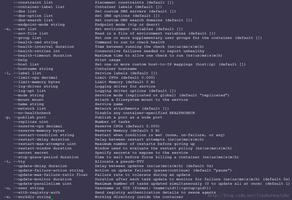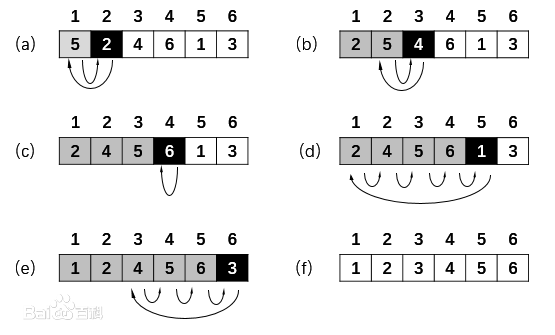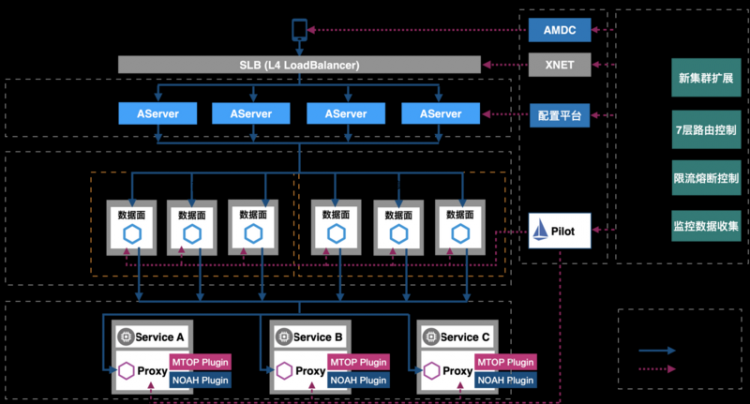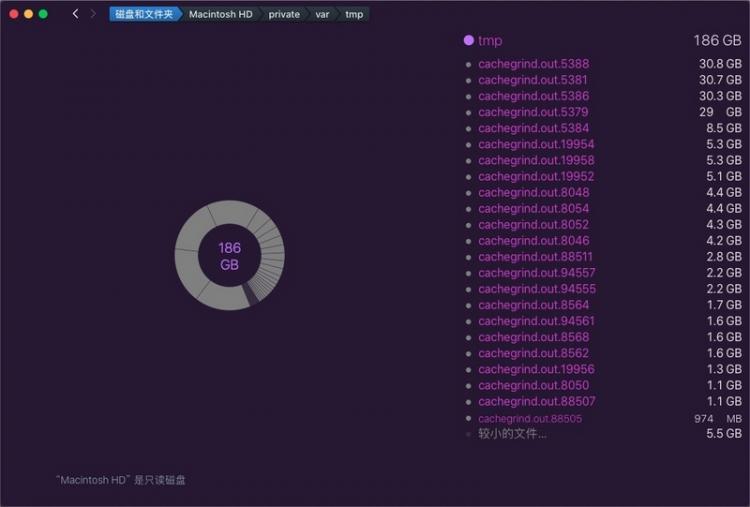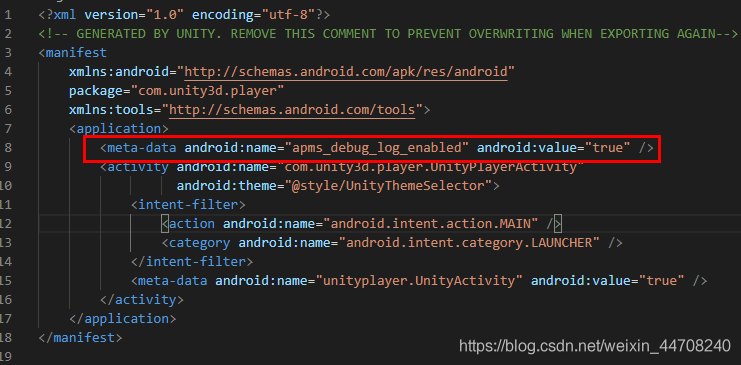ExecutorService令人惊讶的性能收支平衡点—经验法则?
我试图弄清楚如何正确使用Java的执行器。我意识到向提交任务ExecutorService有其自身的开销。但是,我惊讶地发现它是如此之高。
我的程序需要以尽可能低的延迟处理大量数据(股市数据)。大多数计算是相当简单的算术运算。
我想测试的东西很简单:“ Math.random() * Math.random()”
最简单的测试在一个简单的循环中运行此计算。第二个测试在匿名Runnable内部执行相同的计算(这应该用来衡量创建新对象的成本)。第三次测试将传递Runnable给。ExecutorService(这用于衡量引入执行者的成本)。
我在笔记本电脑(2 cpus,1.5 gig ram)上运行了测试:
(in milliseconds)simpleCompuation:47
computationWithObjCreation:62
computationWithObjCreationAndExecutors:422
(大约四次运行一次,最后两个数字相等)
请注意,执行程序比在单个线程上执行所需的时间要长得多。对于1到8之间的线程池,该数字大致相同。
问题:我遗漏了一些明显的东西还是预期的结果?这些结果告诉我,我传递给执行程序的任何任务都必须进行一些非平凡的计算。如果我正在处理数百万条消息,并且需要对每条消息执行非常简单(且便宜)的转换,那么我仍然可能无法使用执行程序…试图将计算分散到多个CPU上可能最终会比仅仅花费更多在一个线程中执行它们。设计决策变得比我最初想象的要复杂得多。有什么想法吗?
import java.util.concurrent.ExecutorService;import java.util.concurrent.Executors;
import java.util.concurrent.TimeUnit;
public class ExecServicePerformance {
private static int count = 100000;
public static void main(String[] args) throws InterruptedException {
//warmup
simpleCompuation();
computationWithObjCreation();
computationWithObjCreationAndExecutors();
long start = System.currentTimeMillis();
simpleCompuation();
long stop = System.currentTimeMillis();
System.out.println("simpleCompuation:"+(stop-start));
start = System.currentTimeMillis();
computationWithObjCreation();
stop = System.currentTimeMillis();
System.out.println("computationWithObjCreation:"+(stop-start));
start = System.currentTimeMillis();
computationWithObjCreationAndExecutors();
stop = System.currentTimeMillis();
System.out.println("computationWithObjCreationAndExecutors:"+(stop-start));
}
private static void computationWithObjCreation() {
for(int i=0;i<count;i++){
new Runnable(){
@Override
public void run() {
double x = Math.random()*Math.random();
}
}.run();
}
}
private static void simpleCompuation() {
for(int i=0;i<count;i++){
double x = Math.random()*Math.random();
}
}
private static void computationWithObjCreationAndExecutors()
throws InterruptedException {
ExecutorService es = Executors.newFixedThreadPool(1);
for(int i=0;i<count;i++){
es.submit(new Runnable() {
@Override
public void run() {
double x = Math.random()*Math.random();
}
});
}
es.shutdown();
es.awaitTermination(10, TimeUnit.SECONDS);
}
}
回答:
- 使用执行程序是关于利用CPU和/或CPU内核的,因此,如果创建一个最多利用CPU数量的线程池,则必须拥有与CPU /内核一样多的线程。
- 没错,创建新对象的成本太高了。因此,减少费用的一种方法是分批使用。如果您知道要进行的计算的种类和数量,则可以创建批处理。因此,请考虑在一个执行的任务中完成了数千次计算。您为每个线程创建批处理。一旦计算完成(java.util.concurrent.Future),就可以创建下一批。甚至可以在parralel中完成新批处理的创建(4个CPU-> 3个用于计算的线程,1个用于批处理供应的线程)。最后,您可能会获得更高的吞吐量,但会带来更高的内存需求(批次,资源调配)。
编辑:我更改了您的示例,并让它在我的小双核x200笔记本电脑上运行。
provisioned 2 batches to be executedsimpleCompuation:14
computationWithObjCreation:17
computationWithObjCreationAndExecutors:9
如您在源代码中所看到的,我也从批处理和执行器生命周期中删除了度量。与其他两种方法相比,这更公平。
自己查看结果…
import java.util.List;import java.util.Vector;
import java.util.concurrent.ExecutorService;
import java.util.concurrent.Executors;
import java.util.concurrent.TimeUnit;
public class ExecServicePerformance {
private static int count = 100000;
public static void main( String[] args ) throws InterruptedException {
final int cpus = Runtime.getRuntime().availableProcessors();
final ExecutorService es = Executors.newFixedThreadPool( cpus );
final Vector< Batch > batches = new Vector< Batch >( cpus );
final int batchComputations = count / cpus;
for ( int i = 0; i < cpus; i++ ) {
batches.add( new Batch( batchComputations ) );
}
System.out.println( "provisioned " + cpus + " batches to be executed" );
// warmup
simpleCompuation();
computationWithObjCreation();
computationWithObjCreationAndExecutors( es, batches );
long start = System.currentTimeMillis();
simpleCompuation();
long stop = System.currentTimeMillis();
System.out.println( "simpleCompuation:" + ( stop - start ) );
start = System.currentTimeMillis();
computationWithObjCreation();
stop = System.currentTimeMillis();
System.out.println( "computationWithObjCreation:" + ( stop - start ) );
// Executor
start = System.currentTimeMillis();
computationWithObjCreationAndExecutors( es, batches );
es.shutdown();
es.awaitTermination( 10, TimeUnit.SECONDS );
// Note: Executor#shutdown() and Executor#awaitTermination() requires
// some extra time. But the result should still be clear.
stop = System.currentTimeMillis();
System.out.println( "computationWithObjCreationAndExecutors:"
+ ( stop - start ) );
}
private static void computationWithObjCreation() {
for ( int i = 0; i < count; i++ ) {
new Runnable() {
@Override
public void run() {
double x = Math.random() * Math.random();
}
}.run();
}
}
private static void simpleCompuation() {
for ( int i = 0; i < count; i++ ) {
double x = Math.random() * Math.random();
}
}
private static void computationWithObjCreationAndExecutors(
ExecutorService es, List< Batch > batches )
throws InterruptedException {
for ( Batch batch : batches ) {
es.submit( batch );
}
}
private static class Batch implements Runnable {
private final int computations;
public Batch( final int computations ) {
this.computations = computations;
}
@Override
public void run() {
int countdown = computations;
while ( countdown-- > -1 ) {
double x = Math.random() * Math.random();
}
}
}
}
以上是 ExecutorService令人惊讶的性能收支平衡点—经验法则? 的全部内容, 来源链接: utcz.com/qa/424338.html



